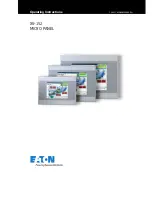
Klippel R&D System
KCS Monitor Tutorial
5
Attention:
The transducer can be destroyed in
KCS OFF
modes as the mechanical protection system
is switched off! When switching to these modes from
KCS ON
mode, make sure that the mechanical
protection system is not active.
1.6
Tutorial 4 – Alignment and Equalization
This tutorial describes how to tune the
small signal response
of the KCS speaker system.
Equalizer
(e.g. A6)
Audio Signal
KCS Audio Path
Alignment
Protection
Output Limiter
f0
alignment
type
Linearization
The automatic alignment feature of KCS allows to tune the low frequency response of the system to
a desired transfer function with defined cut-off frequency
f
0
and filter type (such as
Butterworth
or
Chebychev
). Due to the adaptive compensation of time-varying speaker parameters, this transfer
function will be maintained over the whole lifetime of the transducer. The Alignment is used to
apply a
bass boost
to a sealed box system shifting the cut-off frequency 1-2 octaves below
the system resonance frequency
f
c
match an arbitrary speaker
to a given sealed or vented box enclosure and achieve your
desired transfer behavior
reduce voice coil excursion
below cut-off frequency / subsonic filter
Any additional equalization can be applied before the KCS processing, e.g. using Nuvoton’s
A6
tool
(
NAD platform only
).
Alignment Transfer Functions. Applying alignment sealed box (left) and a passive radiator box system (right). The green
curves represent the target response.
Tips and Requirements for Setting Alignments
Boosting low frequencies leads to large gains in the alignment filters. To avoid clipping, the
input signal must be attenuated by the maximum alignment filter gain manually if the NAD
evaluation board is used to avoid clipping.
Lowering the cut-off frequency by more than two octaves (sealed systems) or far below
port/enclosure resonance (vented/passive radiator systems) is not recommended due to the
potentially drastic increase of peak voltage and displacement demands.










































